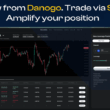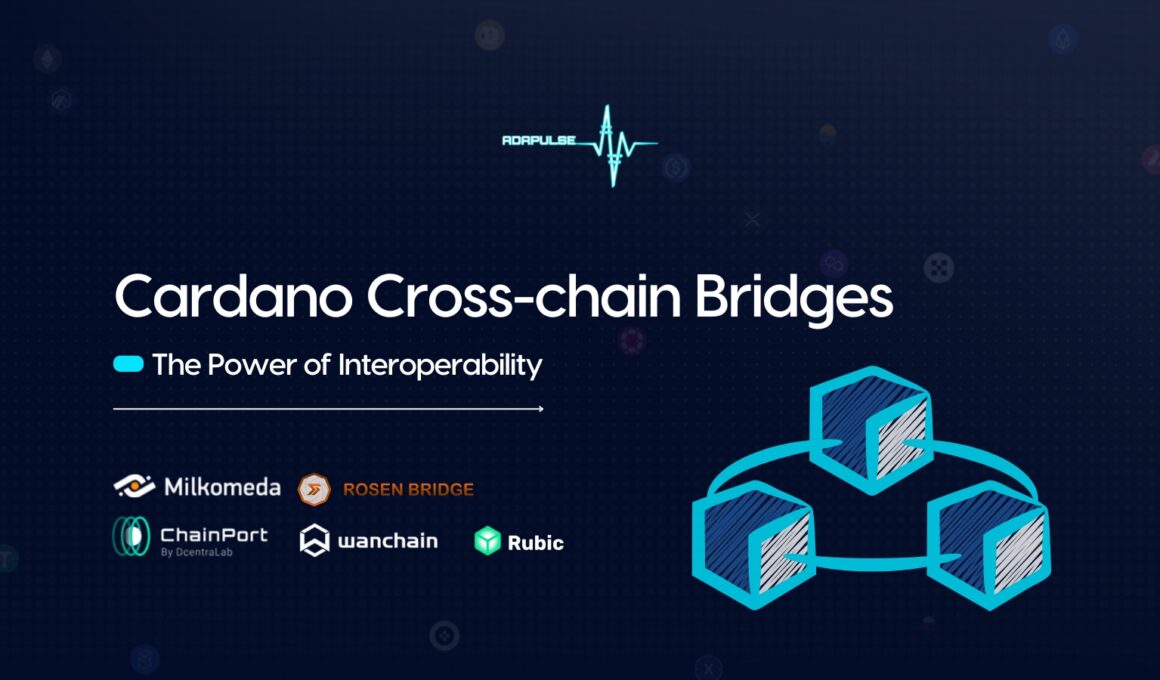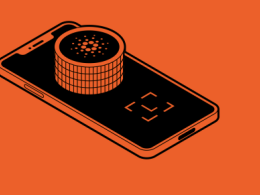Cardano cross-chain bridges have changed how money moves across chains. Look closely, and you’ll see bridges transforming Cardano into a growing center of liquidity and innovation. These bridges allow the flow of funds and gives more possibilities across DeFi and NFTs. ADA as a token moves between ecosystems, creating opportunities many traders haven’t fully recognized yet. I’ll explain why that’s important.
In simple terms, bridges in crypto are like highways between blockchains. Normally, Cardano, Ethereum, or BNB operate in separate spaces. They don’t communicate directly. Bridges address that problem by allowing assets to move from one chain to another. You deposit tokens on one network and receive a version you can use on the destination chain.
Why Every Trader Must Understand Cross-Chain Interoperability
This is important because bridges open up new markets. They bring in more liquidity, increase trading pairs, open up arbitrage opportunities, and allow new yield farming strategies. Instead of staying limited to one blockchain, you can access multiple ecosystems while controlling everything from a single wallet.
Interoperability opens more doors. Today, a few cross-chain bridges allow traders to move selected assets such as stablecoins and wrapped tokens into Cardano’s ecosystem. You can farm yields on Cardano. As liquidity grows, Cardano’s native tokens find stronger real world use beyond pure speculation.
If you ignore cross-chain bridges, you cut yourself off from half of DeFi’s opportunities. You limit your profit potential and leave new opportunities for others. Web3 rewards those who act quickly and stay informed. Fall behind, and others will seize what you missed.
How to Move Funds Into Cardano Through Cross-Chain Bridges
Now let’s get into the real bridges that are actively driving this cross-chain movement. They might not cover everything, but what they support today already creates more ways for traders to engage, move funds, and increase liquidity on Cardano.
Milkomeda: The C1 Sidechain
Milkomeda C1 first launched in April 2022, marking the very first sidechain built for Cardano using the Milkomeda protocol. Since then, the technology has seen continuous upgrades, strengthening both security and trader’s experience. What makes C1 even more important is that it uses wrapped ADA (wADA) as its base asset for fees and transactions. This directly ties the sidechain’s growth to ADA’s utility, ensuring that sidechains like C1 complement Cardano’s mainnet rather than compete with it.
Milkomeda C1 makes it possible for Cardano traders to tap into sidechain smart contracts without ever leaving mainnet. Thanks to its wrapped smart contracts system, when you submit one Cardano transaction containing the required data and assets. From there, Milkomeda automatically handles the transfer, executes the smart contract on the sidechain, and delivers the results back to your wallet. For ADA holders, it creates more ways to put ADA to work across DeFi, dApps, and entirely new services, all while staying rooted in Cardano’s growing ecosystem.
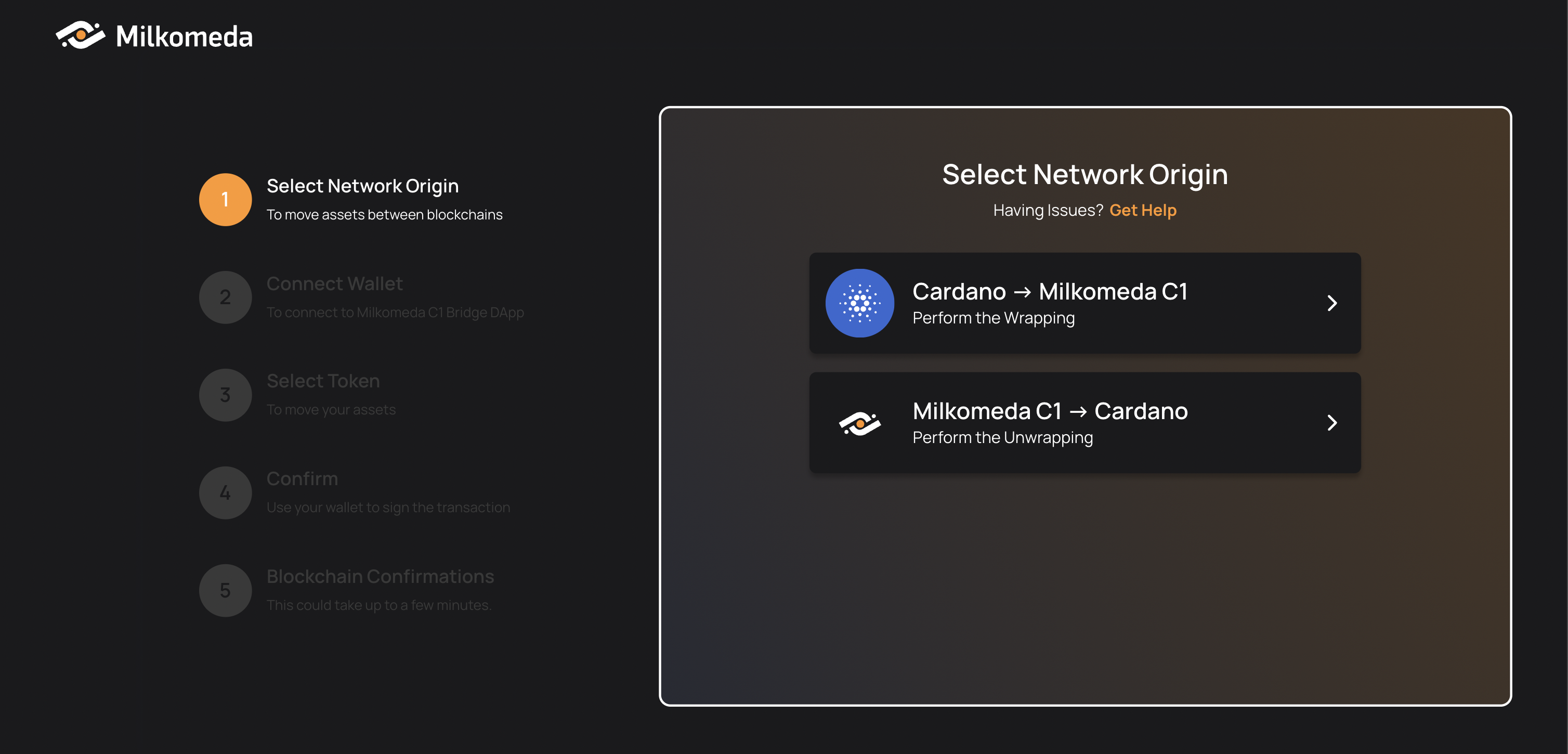
Wanchain Bridge
Wanchain brings one of the most advanced and decentralized bridge models into Cardano’s growing cross-chain activity. Its WanBridge system uses a direct, non-custodial network of smart contracts that lock, mint, burn, and unlock tokens across both EVM and non-EVM blockchains. Unlike many other solutions, WanBridge does not rely on any centralized third parties. Instead, all transactions are executed and secured by Wanchain’s own Bridge Node Group, giving traders full trustless value transfer.
What makes Wanchain even more useful is its Bridge-to-Earn mechanism. This incentive layer turns liquidity management into an opportunity for traders. Anyone can complete cross-chain tasks that help balance liquidity between networks and, in return, earn rewards for their participation. Each task clearly outlines which chain the transfer starts from, which chain it’s going to, the asset involved, how much needs to be moved, and the reward available.
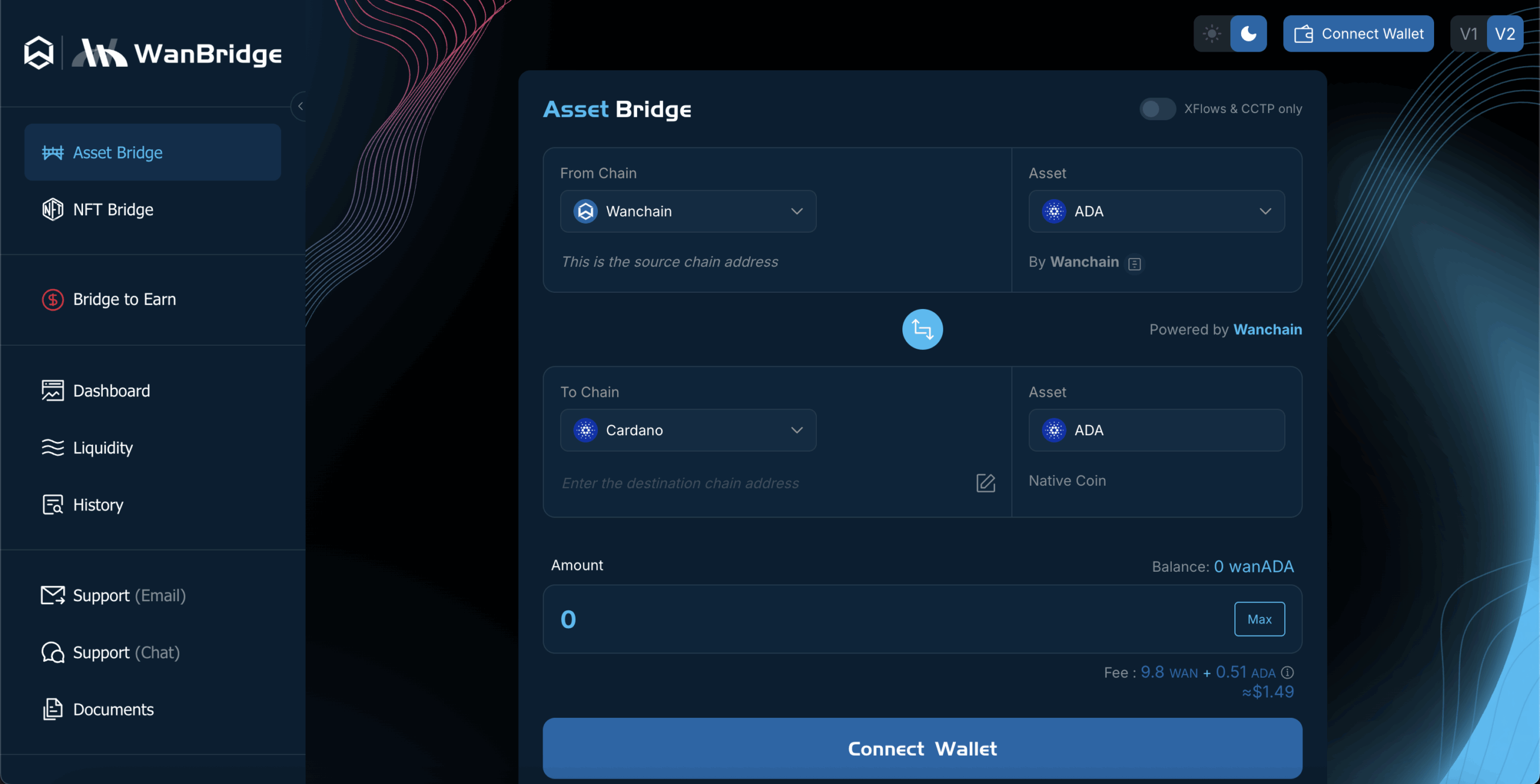
ChainPort Bridge
ChainPort focuses on one thing above all which is security. Since launching in 2021, it has maintained an outstanding record, successfully managing cross-chain transfers without security breaches. Backed by multiple independent audits, ChainPort gives traders confidence when moving assets across supported blockchains.
So far, ChainPort has processed over 97,000 ports, moved millions in trading volume and TVL, and continues to expand its integrations across multiple chains, including support for Cardano native wallets like Lace and Eternl.
Using ChainPort is simple. First, you connect your wallet, whether you’re using Lace, Eternl, or any other supported option. Once connected, you select the token you want to port, either by searching its name or entering the contract address. After choosing the token, you input the amount, approve the transaction, and let ChainPort handle the rest. Within minutes, your tokens arrive safely on the target blockchain, fully transferred without needing any complex steps.
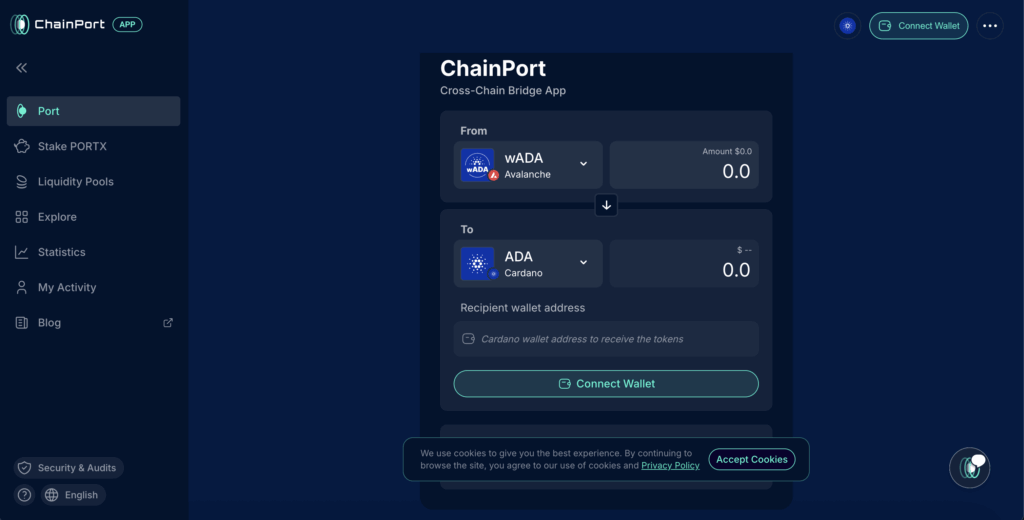
Rosen Bridge
Rosen Bridge serves as a dedicated cross-chain solution connecting Ergo with Cardano and other major blockchains. Unlike most bridges, Rosen is built around a layered security model that blends decentralization with accountability.
At the core, Rosen uses two groups to manage and secure transactions which are Guards and Watchers. Guards are a federated group that oversees the bridge operations. Their power is limited through multisignature wallets, and each Guard locks up collateral to discourage any malicious behavior. If any Guard acts dishonestly, they lose their entire staked funds, creating strong financial protection for users.
On the other side, Watchers handle the monitoring. Each supported blockchain whether Cardano, Bitcoin, or Ethereum, has its own set of Watchers. They track blockchain activity, verify transactions, and report any bridge related events back to Ergo. To keep the system fair, Watchers earn rewards for processing transfers but risk penalties if caught acting fraudulently. Anyone can become a Watcher by staking enough RSN and ERG, allowing the community to participate directly in securing the bridge.
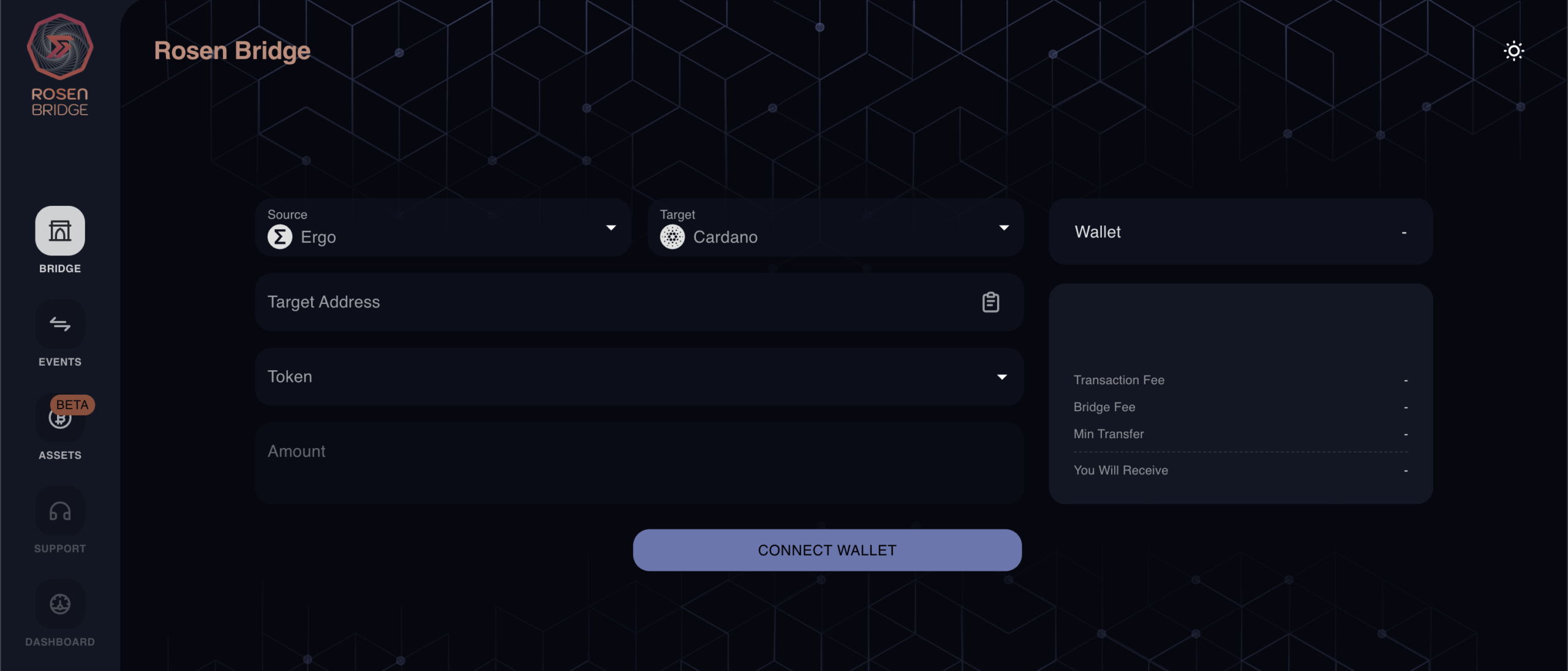
Rubic Bridge
Rubic operates as a powerful cross-chain aggregator that eliminates the hassle of manually comparing bridges and DEXs across Web3. Rather than forcing traders to check multiple platforms for the best rates, Rubic scans over 360 DEXs, bridges, and intent based protocols across more than 100 blockchains, including both EVM and non-EVM networks in just seconds.
With support for over 15,500 tokens, Rubic makes it easy for traders and dApps to swap assets at the best available rate with maximum liquidity and fast execution. Rubic focus on emerging chains that are not listed on the major DEX aggregators, giving traders early access to some of the fastest growing networks in the space.
Behind the scenes, Rubic’s system handles all the routing, bridging, and protocol calls automatically. Its integrated relayers simplify cross-chain swaps into a single transaction, letting traders complete complex cross-chain moves effortlessly without having to leave the interface or manage multiple steps.
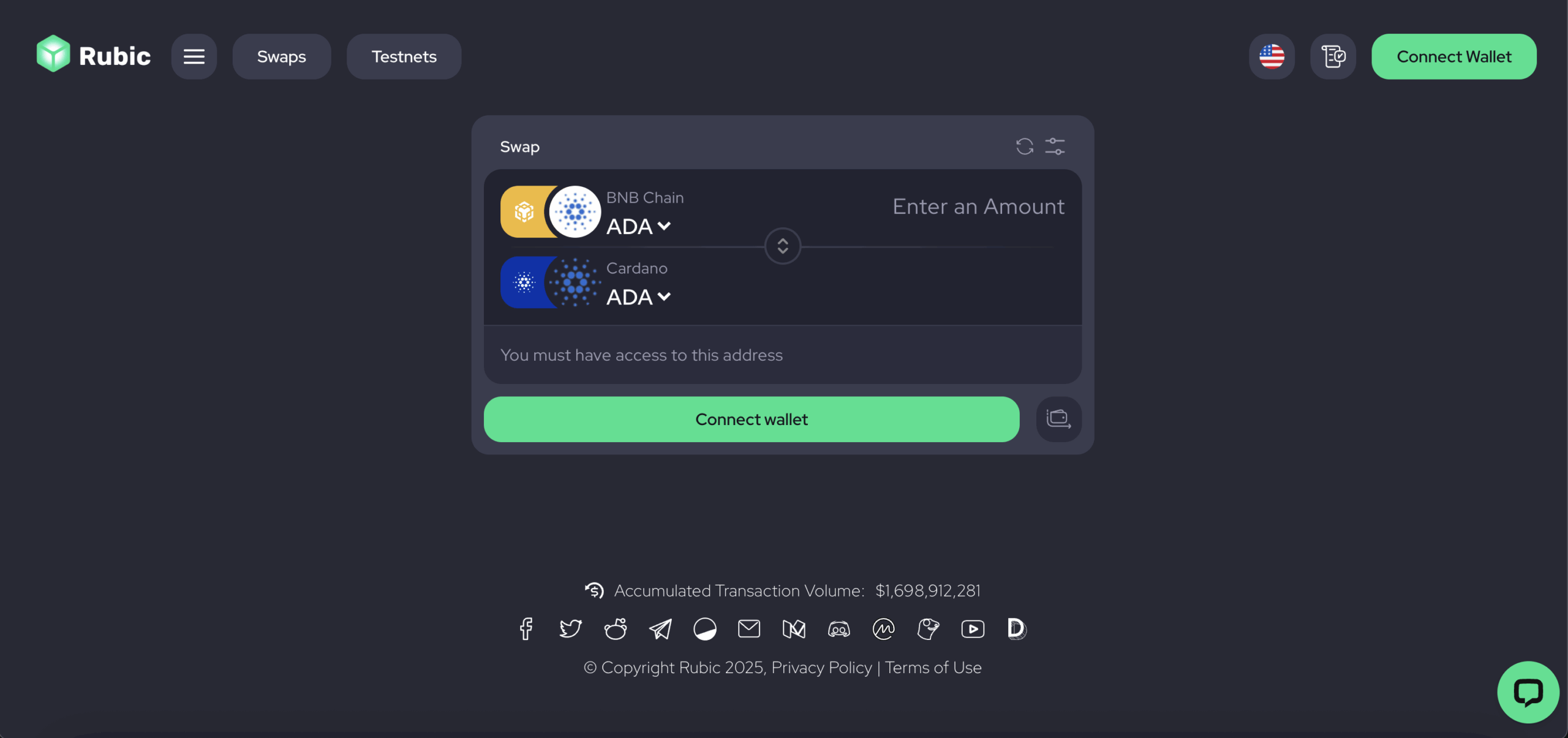
The Bridges Are Already Doing the Work
If you’ve been paying attention, these bridges are creating real entry points for liquidity, traders, and builders who once stayed outside the ecosystem. What exists already unfolds several opportunities for those willing to move. And as more connections form, Cardano’s position in the broader DeFi map keeps getting harder to ignore.
While others wait for perfect conditions, the current bridge ecosystem already offers real ways to move capital, farm yields, and build cross-chain strategies around stablecoins, wrapped tokens, and growing DeFi opportunities. The longer you hesitate, the more ground others cover.



